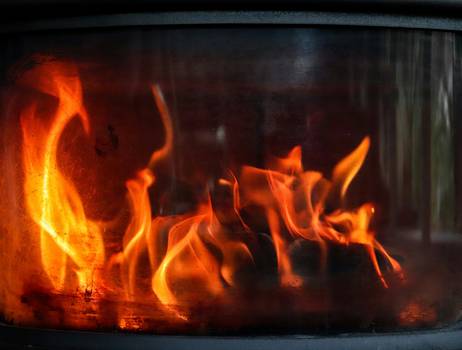Why Stove Regulations & Certifications Matter
- Safety: Certified stoves meet strict safety and emissions standards to protect your home and family.
- Legal Compliance: Many regions require only certified stoves for installation or sale—non-compliance can result in fines or denied insurance claims.
- Insurance: Home insurers often require proof of certification and code-compliant installation.
- Resale Value: Certified stoves and code-compliant installations increase your home’s value and attractiveness to buyers.

Key Regulations by Stove Type
Wood & Pellet Stoves
- EPA Certification (USA): All new residential wood and pellet stoves must meet EPA emission standards—look for an EPA label on the stove or in the manual.
- Local Air Quality Laws: Some cities/states/provinces restrict or ban non-certified stoves, especially during pollution alerts.
- Installation Codes: Must comply with NFPA 211 (US), CSA B365 (Canada), or local equivalents for venting, clearances, and hearth requirements.
Gas Stoves
- ANSI Certification: All gas stoves sold in the US/Canada must be tested and certified to ANSI/CSA standards for safety and efficiency.
- Local Permits: Most areas require a licensed professional for installation and a permit/inspection for gas line work.
- Vent-Free Restrictions: Many jurisdictions ban or restrict unvented gas stoves—always check local code.
Electric Stoves
- UL/ETL Certification: Electric stoves must carry a UL (Underwriters Laboratories) or ETL (Intertek) mark to verify electrical safety.
- Installation: No venting or special permits usually required, but follow manufacturer’s guidelines for placement and outlet use.
Coal Stoves
- EPA Exempt (USA): Most coal stoves are not EPA-certified, but local codes may impose restrictions or require UL listing for safety.
- Chimney Codes: Must vent to a chimney rated for coal exhaust—never combine with other appliances.
- Regional Bans: Some areas prohibit residential coal heating due to environmental concerns.
Understanding Stove Certifications & Labels
- EPA Certified: Indicates stove meets U.S. Environmental Protection Agency standards for smoke emissions (measured in grams/hour); also means higher efficiency.
- UL Listed: UL (Underwriters Laboratories) listing means the stove has passed rigorous safety testing for electrical and fire hazards.
- CSA/ANSI: Canadian Standards Association (CSA) and American National Standards Institute (ANSI) labels indicate compliance with North American safety codes (especially important for gas and pellet units).
- CE Mark (Europe): Indicates compliance with European Union safety and environmental standards.
- ENERGY STAR: Some pellet and gas stoves qualify for ENERGY STAR—meaning top energy efficiency and low emissions.
Always check for a permanent label or plate on the stove body, and request a copy of the certification or test report if in doubt.
Installation Codes & Permits: What to Expect
- Permits: Most municipalities require permits for new stove installations (wood, pellet, gas, and coal). DIY installation is often prohibited for gas and coal stoves.
- Inspections: Building/fire inspectors may check clearances, venting, and certification labels before approving use.
- Documentation: Keep all receipts, permits, and manuals—your insurer may request these to verify compliance.
- Insurance: Notify your home insurer before installing a new stove; some may inspect or require proof of certification.
EPA Emissions Standards (USA)
- NSPS Standards: Since 2015, EPA’s New Source Performance Standards (NSPS) require most new wood stoves to emit no more than 2.0–2.5 grams of smoke per hour.
- Pellet Stoves: Must also meet these standards; some older models are “non-certified” and may be illegal to sell or install.
- State/Local Laws: Many states (e.g. Washington, Oregon, Colorado) have even stricter requirements or ban installation of non-certified stoves entirely.
- Change-Out Programs: Some regions offer rebates to replace old, polluting stoves with certified models.
Stove Regulations: Frequently Asked Questions
- Can I install a non-certified stove in my home? In most areas, only EPA-certified (or equivalent) stoves are legal for new installations. Some locations require removal of old, non-certified units when selling a home.
- Are there grants or incentives for certified stoves? Yes—some states, provinces, and utilities offer rebates for purchasing EPA or ENERGY STAR-certified stoves. Check local programs.
- What documentation do I need? Save the manual, certification label/photo, installation permit, and inspection report for your records and insurance.
- What if I move? Disclose stove certifications and code compliance to buyers—non-compliant stoves may have to be removed before sale.
- Are antique stoves exempt? In some cases, antique/ornamental stoves are exempt if not used for primary heating—check with your local building department.
Tips for Staying Compliant & Safe
- Buy only stoves with visible certification labels from reputable dealers.
- Have your stove installed by a certified professional who will pull the necessary permits.
- Do not modify your stove, venting, or safety systems—alterations can void certification and warranty.
- Schedule annual inspections of your stove and venting for ongoing compliance.
- Keep all documentation (manuals, permits, photos of labels) in a safe place.
Resources & Where to Check Regulations
- EPA Burn Wise Program (USA)
- Canadian Standards Association
- NFPA 211 Fireplace & Chimney Codes
- Local building department or fire marshal (for area-specific rules and permits)
- Home insurance company—always check their requirements before purchasing or installing a stove
Related Guides
Stove Installation Guide
Learn how to install your stove safely and in full compliance with code—step-by-step advice for every fuel type.
Installation GuideStove Safety Tips
Master the most important safety practices for certified and compliant stove use in your home.
Safety TipsEnergy Efficiency for Heating Stoves
See how certified stoves save you money and reduce emissions—expert tips for greener heating.
Efficiency Guide